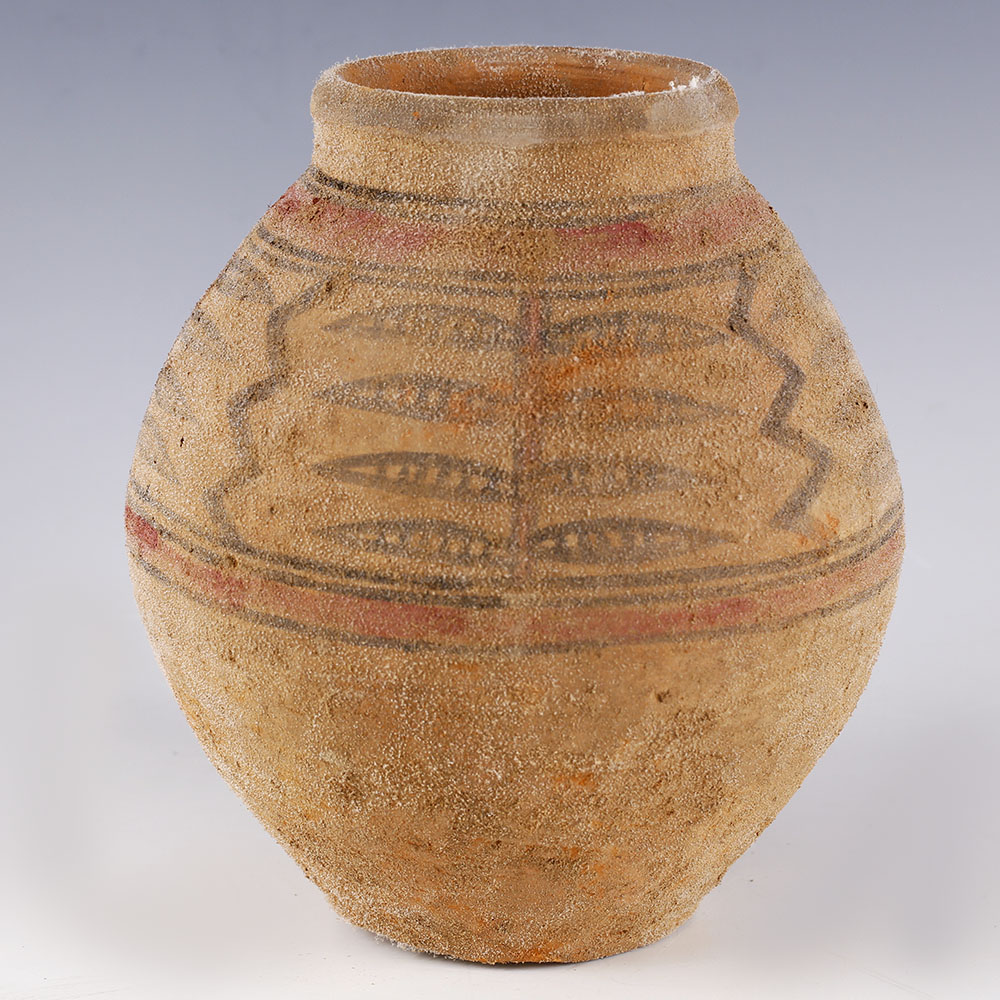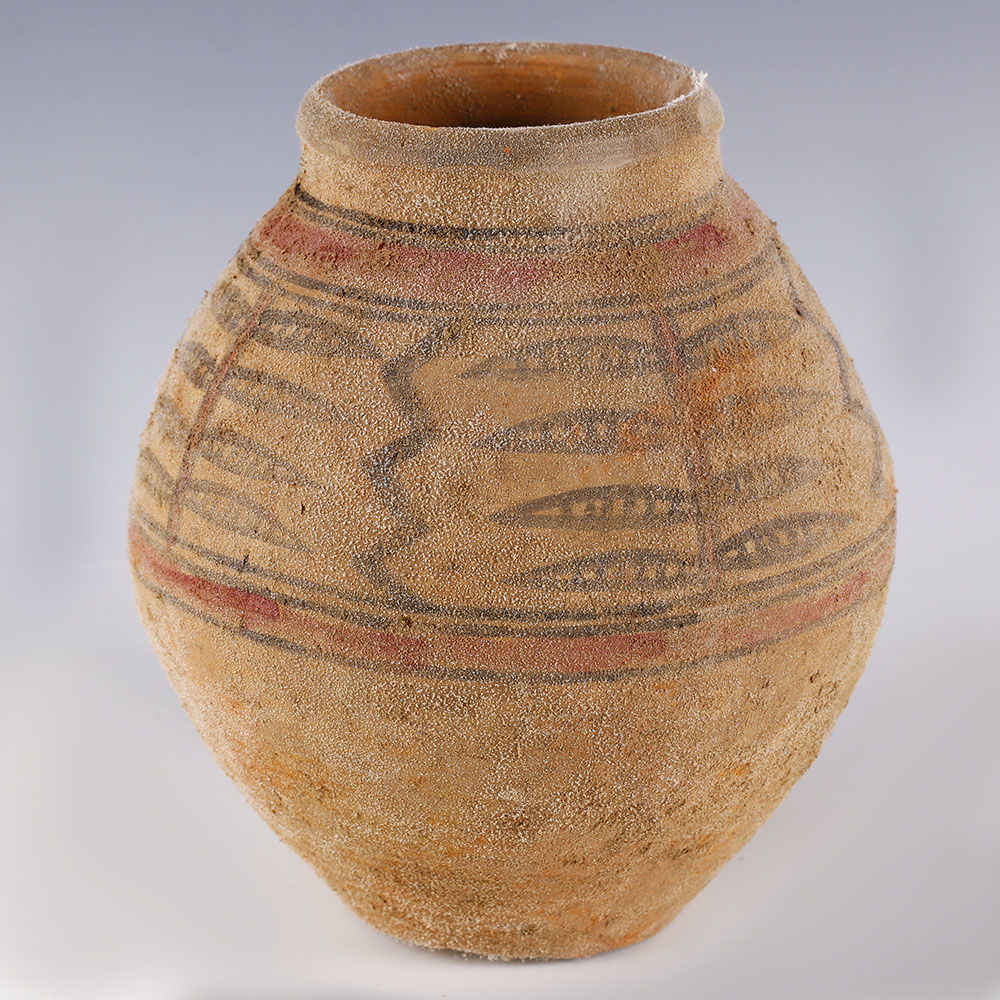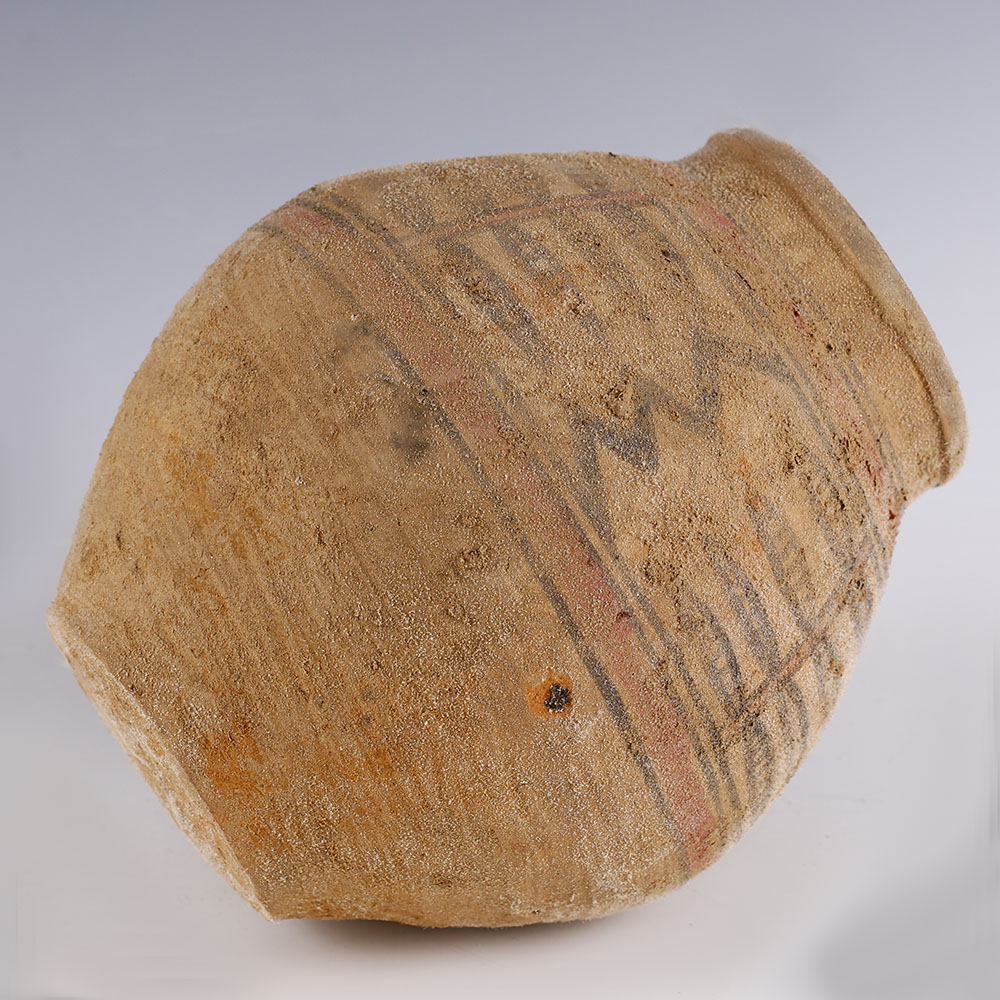The Indus Valley is a Bronze Age civilization from the Near East, which lasted from 3300 BC to 31 BC. It was discovered when engraved seals were found in the Pakistan’s province of Punjab in 1920-21, first in a site called Harappa and then all along the Indus River. Indus Valley inhabitants are known to be skilled in a wide range of techniques, but it is thanks to pottery production if they have been appreciated by archaeologists and collectors. Most of the pottery from such civilization can be dated back to the Nal culture, which flourished in the northwest region of the Indus Valley. Their terracotta works are characterized by a linear style, a geometric repetition of shapes and lines. Also, animals and plants, rendered in a stylised manner, abounded on their creations. Pigments would have been added to enrich such vessels, which would have been used in everyday life but also placed in the tombs with the deceased as grave goods.
Harappan Finely Decorated Jar
$186.41
A beautifully decorated Indus Valley orange terracotta jar, featuring a flattened base, a globular body leading to a short, cylindrical neck and a wide, thick rim. The vessel’s upper body appears decorated with a wide register, comprising bands rendered in red and dark brown pigments, framing a vegetal motif of stylised trees. A beautiful example of one of the earliest civilisations of the Ancient World.
Condition: Extremely well-preserved example.
SOLD
| Weight | 1500 g |
|---|---|
| Dimensions | H 20 cm |
| Culture | |
| Pottery and Porcelain | |
| Region |


